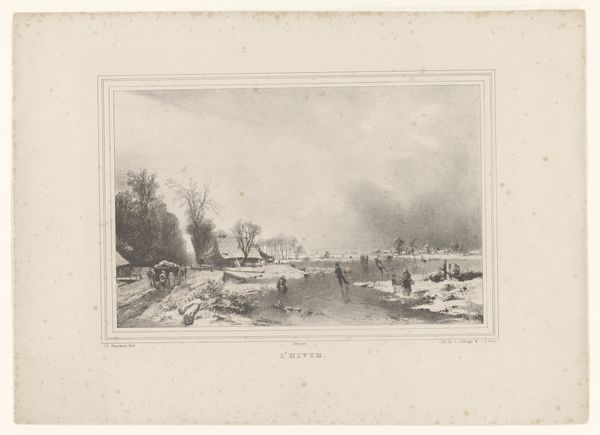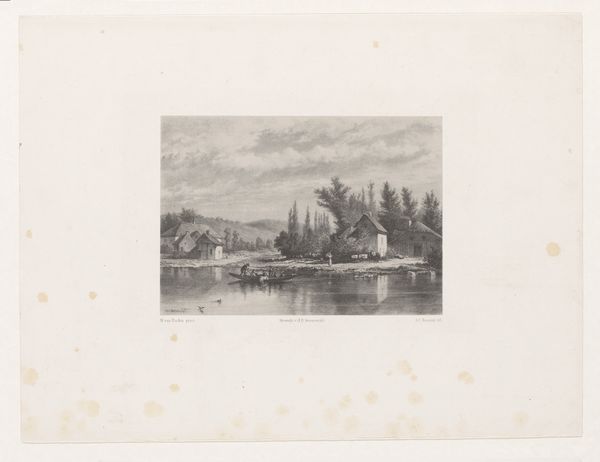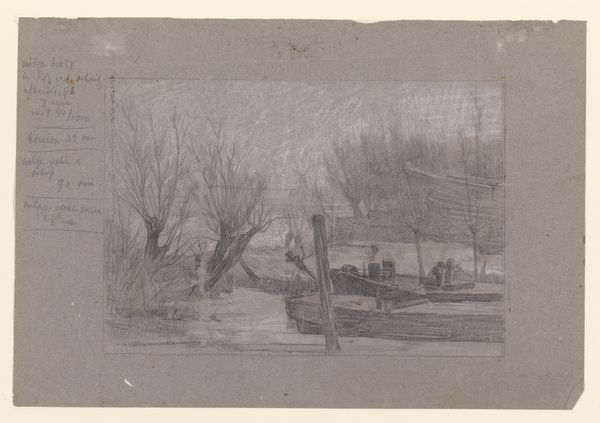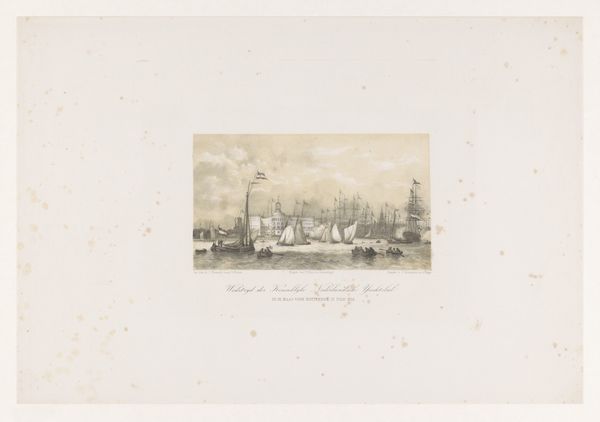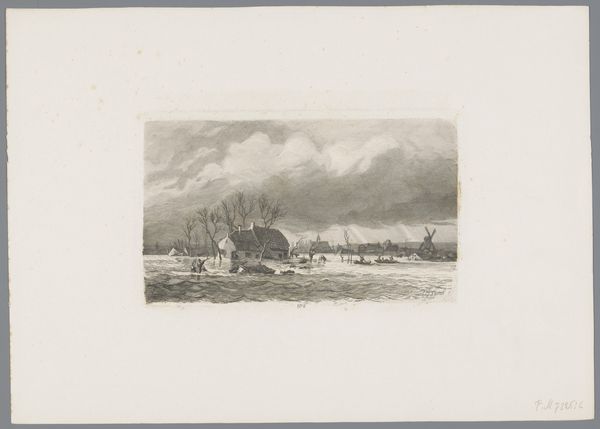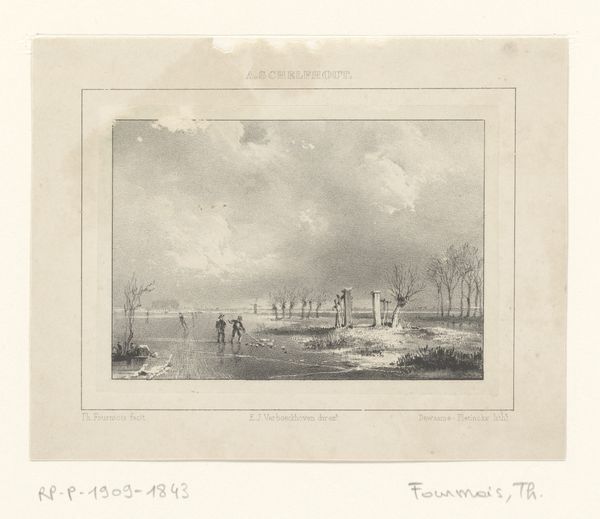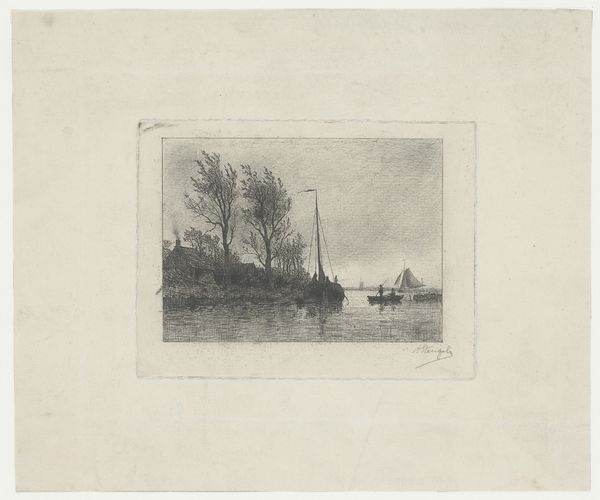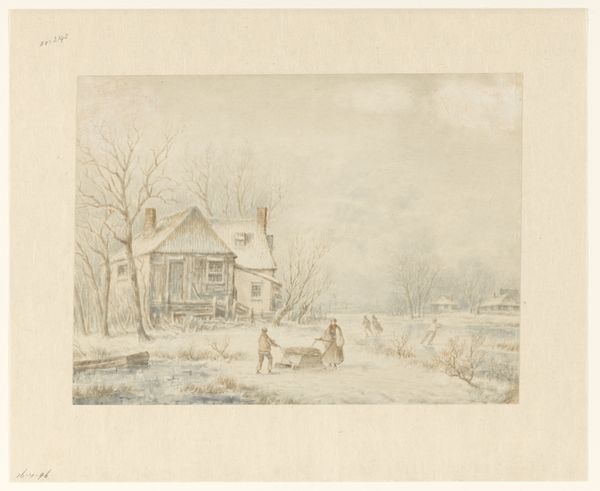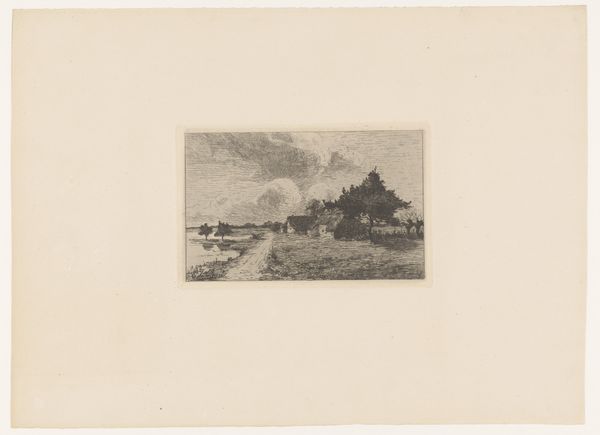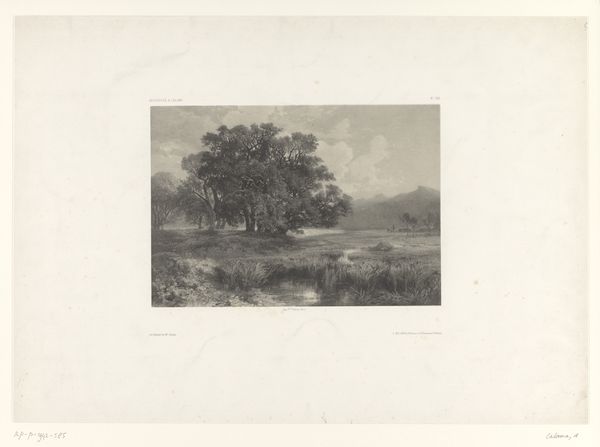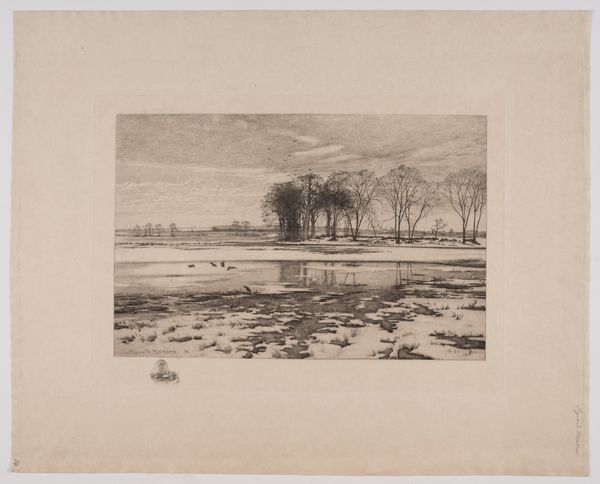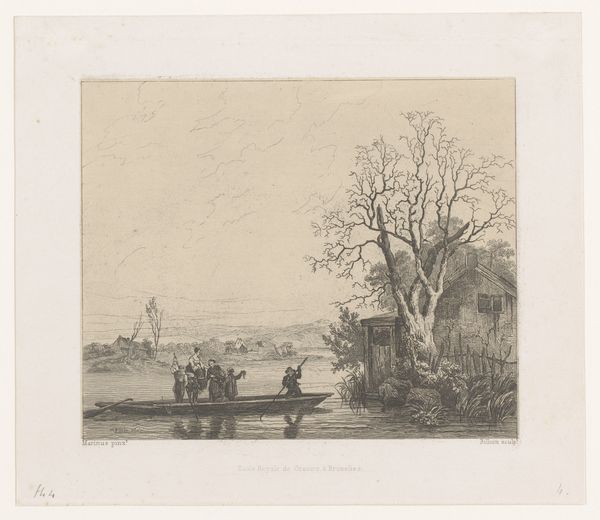
Dimensions: height 265 mm, width 350 mm
Copyright: Rijks Museum: Open Domain
Curator: Today we’re observing Adolf Carel Nunnink’s “Winterlandschap met houtsprokkelende mannen,” which roughly translates to "Winter Landscape with Men Gathering Wood," created sometime between 1863 and 1883. It's a print made using etching and engraving. Editor: Brisk. Bleak, even. The near-monochrome amplifies the harshness. I immediately perceive the composition is drawing my eye deeper into the picture, the way the lines of the ice and the low horizon pull back to that distant church steeple. Curator: The Romanticism style lends itself well to your perception. These scenes were often imbued with social commentary. How does the idea of the working class presented in this manner fit in today’s environment? Consider those figures bent against the elements. Editor: Indeed, notice the delicate line work; the stark contrast achieved through carefully placed shadows almost seems to sculpt the scene out of light. This manipulation serves to underline the grim reality. Curator: This piece makes you wonder what rights and treatment were available to workers depicted at the time it was made. Was his approach of romanticising manual labor a true interpretation or glorification that omitted some realities? How are such works appreciated today within conversations of intersectional narratives, acknowledging issues tied in poverty and class division. Editor: One must acknowledge, however, Nunnink’s command of perspective. The subtle graduation of tones and varying textures render depth and make the scene almost palpable. One senses the cold. The economy of the composition creates that. Curator: But isn’t that sense heightened by the viewer bringing to it some implicit acknowledgement? We understand how challenging weather and poor economics impact access to education and healthcare to people struggling with these difficulties. When was romanticising something beautiful at its time in direct contrast of some painful social circumstances and what does it become years later through our new understanding? Editor: Regardless, “Winterlandschap” stands as a fine example of formal technique. Nunnink directs and dictates mood by creating visual cues of what it represents. Curator: Certainly, as it engages, reminds, questions and reveals so many ways historical and contemporary narrative is conveyed. Editor: It all does comes down to an emotional reaction, shaped by visual stimuli as a final thought.
Comments
No comments
Be the first to comment and join the conversation on the ultimate creative platform.
